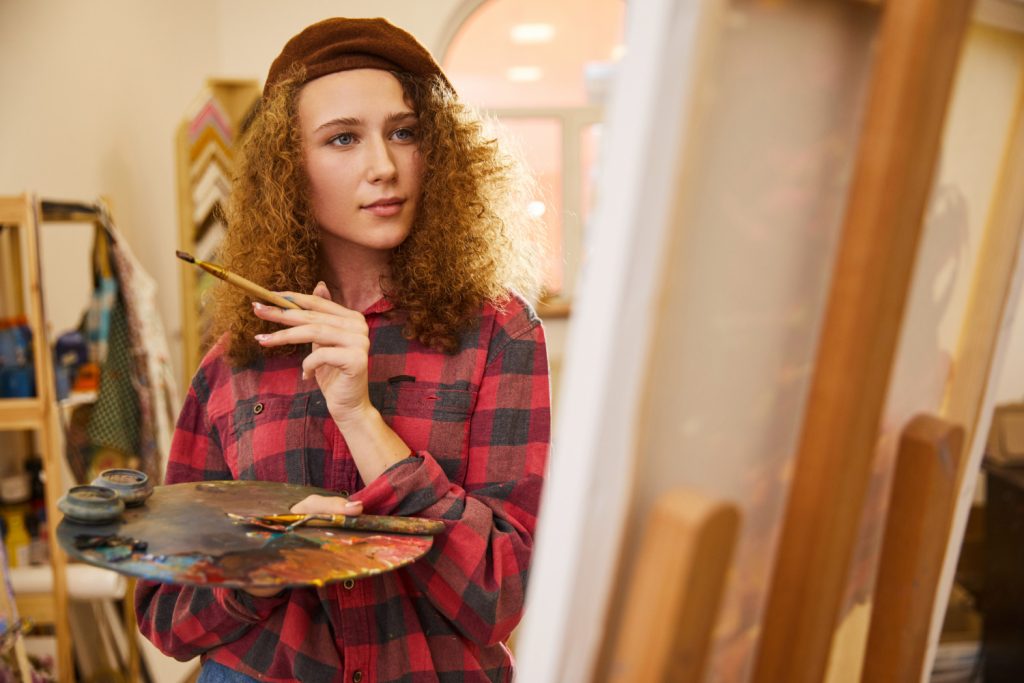A Beginner’s Guide to Understanding Fine Art as a Field
In the vibrant world of visual arts, fine art holds a prestigious position, embodying the highest expression of human creativity and aesthetic endeavor. However, for those new to this realm, understanding and appreciating fine art can seem daunting. This beginner’s guide aims to demystify the complexities surrounding fine art, making it accessible and enjoyable for everyone. By exploring the basics of fine art, and its various forms, and offering tips on how to appreciate it, we hope to open the doors of this enriching world to newcomers.
What is Fine Art?
Fine art is a visual art form created primarily for its aesthetic value and intellectual stimulation, rather than its functional purpose. It encompasses a wide range of disciplines, including painting, sculpture, drawing, printmaking, and photography, each with its unique mediums and techniques. Fine art is known for its ability to evoke emotions, provoke thought, and reflect cultural and personal identities.
Historical Context
Fine art is deeply rooted in history, with each period bringing forth distinctive styles and movements. From the realism of the Renaissance to the abstract expressions of Modern art, understanding the historical context of a piece can significantly enhance your appreciation. Familiarize yourself with the major art movements—such as Baroque, Romanticism, Impressionism, Expressionism, and Cubism—to grasp the evolution of art through the ages.
Understanding the Different Forms of Fine Art
- Painting: This is perhaps the most recognized form of fine art, offering a vast array of styles from abstract to realism. Paintings can convey a multitude of narratives, emotions, and perspectives through the interplay of color, texture, and composition.
- Sculpture: Sculpture is the art of creating three-dimensional works. It can involve subtractive techniques (carving away from a solid block) or additive processes (building up from materials) and can range from classical figures to abstract forms.
- Drawing and Printmaking: These arts are fundamental in the world of fine art, serving as the basis for many other forms. Drawing involves creating images on a surface by making marks, while printmaking involves producing images by printing, typically on paper. Both forms offer infinite possibilities for expression.
- Photography: Photography is a relatively modern addition to the fine arts, capturing images through light on a sensitive surface. It’s a powerful medium for storytelling and documenting reality from diverse perspectives.
The Elements of Fine Art
Understanding the basic elements of art can help you analyze and appreciate artworks more deeply:
- Line: The path created by a moving point. Lines can vary in width, direction, and length, and are essential for defining shapes and forms.
- Shape and Form: Shapes are two-dimensional, while forms are three-dimensional. They can be geometric or organic and are fundamental to the composition of an artwork.
- Color: Colors can convey mood, express symbolism, and create depth. Understanding color theory—the study of color mixing and the visual effects of specific color combinations—can enhance your interpretation of artworks.
- Texture: The perceived surface quality of a work of art. Texture can be actual (tangible) or implied (suggested visually).
- Space: Refers to the illusion of depth in a two-dimensional work and the actual space occupied by a three-dimensional work.
How to Appreciate Fine Art
- Visit Art Galleries and Museums: Immersing yourself in the environment where fine art is displayed can significantly enhance your appreciation. Take your time to observe each piece closely, and don’t hesitate to visit multiple times.
- Learn About the Artists: Understanding the artist’s background, motivations, and the historical context of their work can add depth to your appreciation. Many artists convey personal or societal messages through their art, which can be more deeply understood with background knowledge.
- Participate in Art Workshops or Courses: Engaging in art-making processes yourself can provide insights into the techniques and challenges of creating fine art. Many local art centers, galleries, and museums offer workshops for beginners.
- Join Art Discussions and Tours: Many galleries and museums organize tours and discussion groups led by art historians or curators. These can offer fascinating insights and foster a deeper understanding of the art on display.
- Keep an Open Mind: Art is subjective, and its interpretation can vary widely among individuals. Be open to experiencing a range of emotions and thoughts as you explore different artworks.
Conclusion
Do you want free career counseling?
Ignite Your Ambitions- Seize the Opportunity for a Free Career Counseling Session.
- 30+ Years in Education
- 250+ Faculties
- 30K+ Alumni Network
- 10th in World Ranking
- 1000+ Celebrity
- 120+ Countries Students Enrolled
The fascinating world of fine art can be a trip full of personal growth, discovery, and motivation. Whether you’re a beginner or an experienced art lover, this guide has explained the background, parts, and appreciation of fine art so that everyone can enjoy this interesting field. Remember that fine art isn’t just found in museums and galleries; it’s a lively part of our culture that everyone is waiting to find and enjoy. If you want to learn more about fine arts, you might want to take classes at the Asian Acadehttps://aaft.com/schooloffineartmy of Film and Television (AAFT). AAFT has many programs that focus on different areas of fine arts. These programs are great for nurturing your imagination and starting a satisfying journey in this timeless and always-changing field. Fine art is beautiful, complicated, and has endless possibilities. Let it change your life in ways you never thought possible.
FAQ
Do I need to have a background in art to appreciate fine art?
No, you don’t need a background in art to appreciate fine art. While having some knowledge can enhance your understanding and appreciation, art is meant to be experienced and felt by everyone. Start by visiting galleries and museums, and trust your instincts and feelings as you view different pieces. Over time, your understanding and appreciation will naturally grow.
How do I start collecting fine art?
Starting a fine art collection can be a rewarding endeavor. Begin by exploring various artists and styles to understand what resonates with you. Attend art fairs, gallery openings, and auctions to see a wide range of works. It’s also important to research the artists and their works before making a purchase, considering factors such as the artist’s reputation, the artwork’s provenance, and its potential value. Starting small and gradually expanding your collection based on your tastes and budget is a prudent approach.
What’s the difference between modern and contemporary art?
Modern art refers to artistic works produced during the period extending roughly from the 1860s to the 1970s and is associated with art movements such as Impressionism, Cubism, and Surrealism. It represents a departure from traditional forms and emphasizes innovation and experimentation. Contemporary art, on the other hand, is art created in the late 20th and early 21st centuries. It reflects current issues, trends, and technologies and is characterized by its diverse and eclectic nature. Contemporary art is continually evolving and includes various mediums and styles.

AAFT has been providing the world with limitless creativity and expression since 1993! Through a dynamic and industry-driven curriculum, AAFT provides engaging and captivating articles to persuasive blogs and empowers its readers to explore diverse avenues of creative media education-related content.







